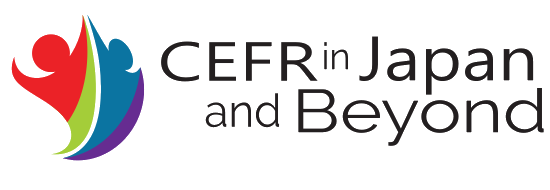Volume3
CEFR Journal - Research and Practice
Volume 3 (October 2020)
https://doi.org/10.37546/JALTSIG.CEFR3
These articles are open access and licensed under an Attribution-NonCommercial-NoDerivatives 4.0 International (CC BY-NC-ND 4.0) license.
Download PDF of complete issue:
Click here for downloading complete issue of volume 3 with DOI
Table of Contents
Volume 3-1, page 6-20: Is a self-regulatory eELP the way forward? A reflection on two decades of achievements and failures of the ELP, Maria José Luelmo del Castillo (Rey Juan Carlos University) & Maria Luisa Pérez Cavana (Open University)
Volume 3-2, page 21-43: Initial stages of individual teacher CEFR-related classroom curriculum projects at Miyazaki International College, Rebecca Schmidt (Miyazaki International College) & Ellen Head (Miyazaki International College)
Volume 3-3, page 44-58: Learner perspectives: familiarization, knowledge, and perceptions of the CEFR, Gary Cook (Hiroshima Bunkyo University) & Yukari Rutson-Griffiths (Hiroshima Bunkyo University)
Volume 3-4, page 59-86: Investigating the difficulties for university learners of English in Japan of CEFR B1-level phrases, Takeshi Matsuzaki (Meiji University) & Kevin Mark (Meiji University)
Volume 3-5, page 87-97: Interpretation of the CEFR Companion Volume for developing rating scales in Cuban higher education, Claudia Harsch (University of Bremen), Ivonne de la Caridad Collada Peña (University of Informatics Sciences, Havana), Tamara Gutiérrez Baffil (University of Pinar del Río), Pedro Castro Álvarez (University of Informatics Sciences, Havana), & Ioani García Fernández (University of Cienfuegos)
Volume 3-6, page 98-103: Utilising pupils’ plurilingual skills: a whole-school approach to language learning in a linguistically diverse Irish primary school, Déirdre Kirwan (former principal of Scoil Bhríde Cailíní)
Volume 3-7, page 104-115: Developing an e-portfolio reflecting the concept of mediation for university students, Yukie Saito (Chuo University)
Volume 3-8, page 116-125: Classroom-based assessment of group discussion: Challenges and opportunities, Olga Y. Lankina (St. Petersburg State University) & Yulia V. Petc (St. Petersburg State University)
Editorial - Volume 3, Alexander Imig
The CEFR and the international CEFR-movement represent an achievement of the emerging world society. Built upon a foundation of long-range language policy by the Council of Europe (CoE), the CEFR was a European project first. But since then, the project has turned out to be a success story beyond Europe as well; as the volume of Byram and Parmenter (2012) impressively demonstrated. The perspective, however, of their book is in two aspects too narrow: 1) the case studies of countries offer only a brief outline for these particular countries; 2) the role of networks of teachers and researchers is only touched upon. A systematic analysis of networks could not be carried out within the limited framework of the book. Inquiring into both aspects is in fact the ‘raison d’être’ of the CEFR Journal. The first and second volume of this journal illustrate amply that practitioners in the field of language learning, teaching, and assessment also successfully act as researchers and have to offer valuable insights into approaches utilizing the CEFR in different organizations.
This third volume of the CEFR Journal continues this policy and starts with an important companion to the CEFR: the portfolio for languages; the European Language Portfolio (ELP). Maria José Luelmo del Castillo and Maria Luisa Pérez Cavana ask in the first text in the Article section: “Is a self-regulatory eELP the way forward?” and they offer a reflection on “two decades of achievements and failures of the ELP”. The next three articles are contributions from Japan. In the second article Rebecca Schmidt and Ellen Head analyze “Initial stages of individual teacher CEFR-related classroom curriculum projects at Miyazaki International College”, and in the third article Gary Cook and Yukari Rutson-Griffiths (Hiroshima Bunkyo University) introduce “Learner perspectives: familiarization, knowledge, and perceptions of the CEFR”. In the fourth article Takeshi Matsuzaki and Kevin Mark are “Investigating the difficulties for university learners of English in Japan of CEFR B1-level phrases”, which provides an in-depth study about the usage of the English Vocabulary Profile (EVP) and its application in Japan.
of group discussion”. It features the “challenges and opportunities” of successful group discussions, including the complex question of how effective group discussions can be evaluated.
— Nagoya (Japan), September 2020
Reference
Byram, Michael & Lynne Parmenter. 2012. The Common European Framework of Reference: The globalisation of language policy. Bristol: Multilingual Matters.
(Update February 25th, 2023 MGS)

